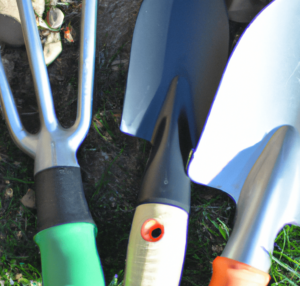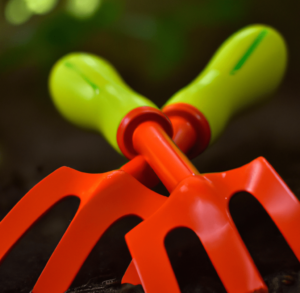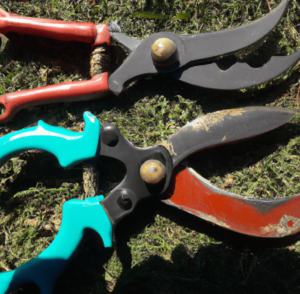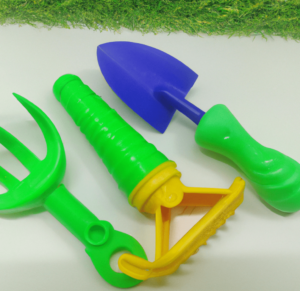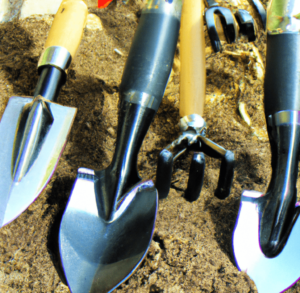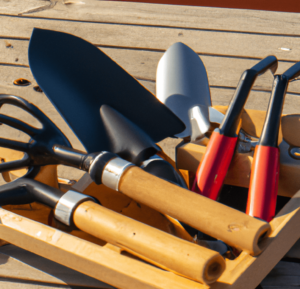For decades, gardening has been a well-liked pastime and career, but as technology has advanced, so too have the gardening tools and equipment. Both residential and commercial gardens now frequently use precision instruments, like GPS-guided cultivators, to increase planting and maintenance efficiency. In order to make the usage of hand tools more pleasant, ergonomic designs and lightweight materials have been incorporated. In addition to making the process simpler for the gardener, technological integration in gardening tools and equipment has aided in the promotion of ecologically responsible practices. Here’s our gardening guide to the role of technology in gardening tools and equipment.
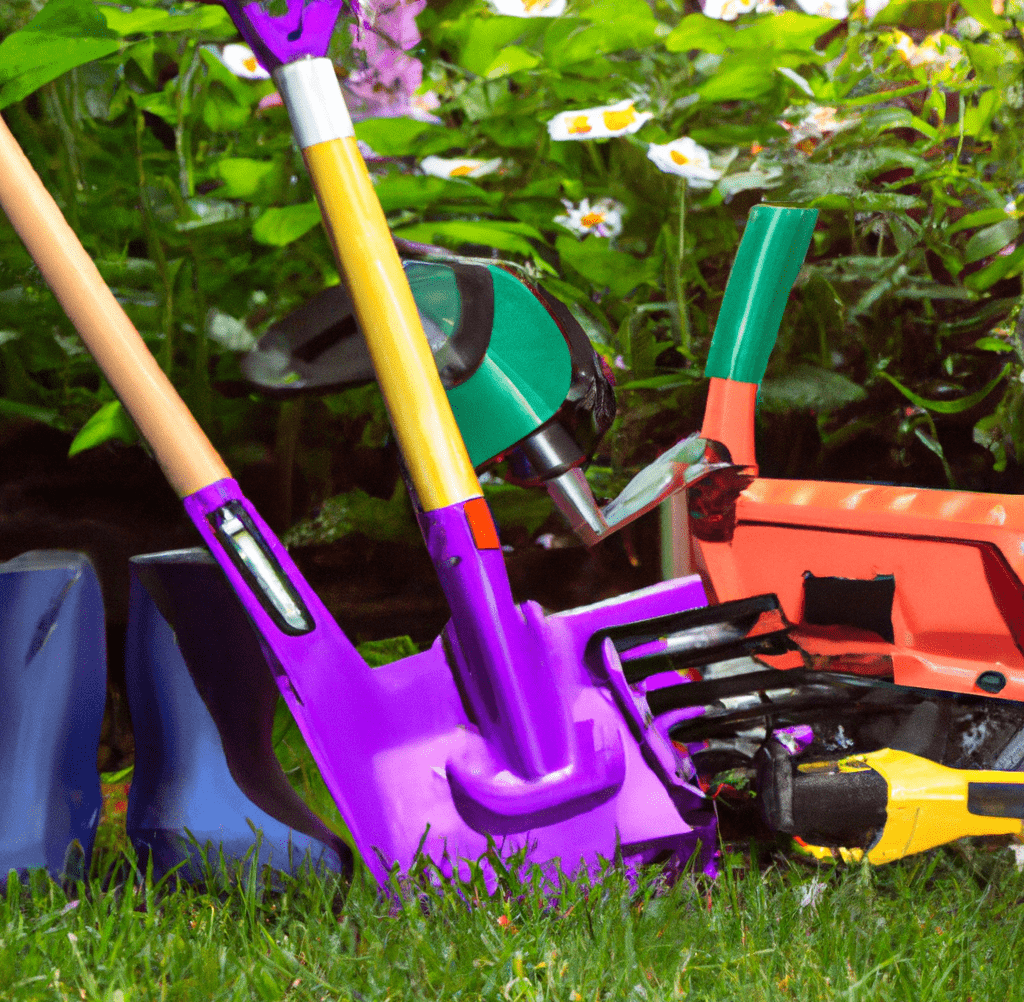
Advancements in Technology for Gardening Tools
The role of technology in gardening tools and equipment has made gardening considerably more precise and effective. The manner in which plants are grown and cared for has been changed by the development of precise instruments like soil moisture sensors and GPS-guided cultivators. With the help of this technology, planting, and maintenance can be done precisely, lowering the possibility of over- or under-watering and improving plant health.
Along with ergonomic designs and lightweight materials, hand tools, which do have benefits over power tools, have been upgraded to make them more comfortable to use for prolonged periods of time. Gardeners can now plan their gardens, keep track of their plants, and even receive professional gardening guidance thanks to the development of garden management software and applications. These technological developments have improved gardening’s accessibility, effectiveness, and environmental friendliness.
Smart Irrigation Systems
The role of technology in gardening tools and equipment is now included in controlling the watering of plants and lawns in smart irrigation systems. In order to optimize watering schedules, these systems use cutting-edge technology to monitor weather patterns, soil moisture, and the water requirements of specific plants. This supports healthy plant growth and aids in water conservation. For instance, intelligent irrigation systems can be configured to adjust watering amounts in response to the intensity of the sun, ensuring that plants get precisely the right amount of moisture without drowning. This is particularly crucial for young trees and shrubs, as they benefit from regular hydration while their root systems develop.
Automation of Watering Schedules
Gardening has been transformed by the automation of watering schedules, which has made plant care simpler and more effective. A smart irrigation system makes it simple to automate and adapt watering schedules depending on individual plant requirements, weather patterns, and soil moisture levels. As it eliminates the need for manual watering and guarantees that each plant receives the ideal amount of water, this degree of control and precision is an invaluable tool for any gardener.
Gardeners no longer have time to water their plants by using their hands because of the role of technology in gardening tools and equipment. Smart irrigation systems, on the other hand, use cutting-edge technology to make these choices, freeing up time and resources for further gardening activities. Additionally, automation ensures that plants receive the proper quantity of moisture for optimum growth and health while reducing the risk of overwatering or underwatering. Overall, automating watering schedules is a game-changer for contemporary gardening and an important tool for caring for a flourishing, attractive garden.
Water Conservation and Soil Moisture Monitoring
The role of technology in gardening tools and equipment has ensured that systems make sure that plants get the proper amount of water, without wasting any, by monitoring soil moisture levels and modifying irrigation schedules accordingly. This promotes plant health and growth as well as water conservation.
Smart irrigation systems provide data that may be used by gardeners to make educated decisions regarding the watering requirements of their plants. They can assess the amount of moisture in the soil using a trowel and make any necessary adjustments to the watering schedules. Other gardening equipment cannot equal this level of control and accuracy, which enables gardeners to save money, and water, and maintain the health of their plants.
Electric and Battery-Powered Tools
Gardeners have an easy, effective, and environmentally responsible way to manage their landscapes with the use of electric and battery-powered tools. These instruments, like battery-operated pruning tools, are portable and fitted with fine-tipped blades for accurate cuts to enhance plant development and aesthetics. The role of technology in gardening tools and equipment has made a greener option to conventional gas-powered tools and can improve the garden while lowering emissions more accessible.
Cordless and Portable Options
Gardeners now have more flexibility and convenience thanks to the role of technology in gardening tools and equipment. Since they don’t need wires or other power sources and are made to be lightweight and simple to use, these tools are perfect for usage throughout the garden.
For instance, without the inconvenience of cords and cables, plants and lawns may be quickly and conveniently maintained with cordless hedge trimmers and lawnmowers. These instruments can be moved around the yard with ease and have strong batteries that supply enough power to finish the work.
Additionally, cordless and portable solutions are a perfect replacement for conventional machinery like tractors that can be heavy and awkward to use. These tools give gardeners the flexibility and convenience they need to complete their tasks, making them perfect for small gardens and landscaping jobs.
Reduced Noise and Emissions
Many gardeners are concerned about noise and pollutants, and the role of technology in gardening tools and equipment has made it possible to reduce these effects. When compared to conventional gas-powered tools, precision tools that run on electricity or batteries, for instance, are significantly quieter and cleaner, making them perfect for usage in residential settings and delicate surroundings.
These technologies allow gardeners to care for their plants and outdoor spaces without upsetting their neighbors or the ecosystem in the area. Additionally, compared to their gas-powered counterparts, these instruments are frequently lighter and more portable, making them simpler to use and carry.
Robotic Lawn Mowers and Garden Maintenance Robots
For gardeners wishing to maintain their lawns and gardens in peak condition, robotic lawn mowers, and garden maintenance robots offer a practical and effective answer. These cutting-edge tools are perfect for busy gardeners because they carry out chores like lawn mowing and tree and shrub pruning without the need for manual labor. They navigate the garden with ease and accuracy because of their sophisticated sensors and navigational systems. They offer an easy approach to creating a beautiful and healthy garden, whether you are an experienced gardener or just getting started the role of technology in gardening tools and equipment can work in your favor.
Automatic Mowing and Trimming
The role of technology in gardening tools and equipment that include automatic mowing and trimming provides gardeners with a practical and effective approach to maintaining their lawns and landscapes. Gardeners may now automate these operations with the use of precise instruments and cutting-edge technology, freeing them time and resources to concentrate on other areas of their gardens.
For instance, autonomous lawnmowers have sensors and navigational systems that enable them to precisely maneuver around the yard while cutting the lawn. Additionally, automatic hedge trimmers and pruning tools are made to trim and prune plants, branches, and shrubs swiftly and easily while maintaining strength and accuracy.
Additionally, gardeners can create a more polished and professional appearance for their gardens by using mechanized mowing and trimming tools rather than hand-held equipment or human work. Gardeners who are short on time and energy or who want to make the most of their gardens’ health and beauty can particularly benefit from this.
Remote Control and Monitoring Capabilities
Modern gardening tools and equipment come with high-tech features like remote control and monitoring capabilities. As a result, gardeners can easily use their cell phones or other devices to remotely monitor and manage their equipment.
For instance, the role of technology in gardening tools and equipment has made it so that many tractors and mowers now come equipped with GPS and Wi-Fi, enabling gardeners to follow the location and state of their equipment and to manage its motions and functions from a distance. This is especially helpful for gardeners who have expansive or intricate gardens or who must transport their tools from one place to another.
Additionally, by giving real-time reports on the equipment’s performance and maintenance requirements, remote monitoring and control capabilities can aid gardeners in maintaining their equipment. This may contribute to the equipment lasting longer and requiring less physical labor and hands-on maintenance.
Precision Gardening Tools
Pruning and trimming tools, which make accurate cuts without causing damage to the surrounding foliage or bark, encourage healthy growth and preserve the natural form and shape of plants. These instruments also assist in maintaining the orderly appearance of gardens. Any gardener, whether seasoned or just starting out, needs precision equipment to easily and confidently create a healthy and beautiful garden and the role of technology in gardening tools and equipment has made all of this easier.
GPS-Enabled Tools for Mapping and Surveying
Modern gardening tools often include GPS-enabled instruments, which provide gardeners with a new degree of accuracy and precision when measuring and mapping their gardens. GPS-enabled tools can make it simple for you to accomplish your objectives, whether you’re planting new plants, setting up garden beds, or fixing landscaping issues.
For instance, you may ensure that your plants are spaced and positioned precisely by planting and placing them with pinpoint accuracy using GPS-enabled trowels and other precision tools. This can aid in encouraging healthy growth and development and avoiding crowding or plant competition.
By giving precise maps and data about the terrain, soil types, and other key elements of your garden, GPS-enabled gadgets can also assist you in identifying and resolving landscape issues. You may use this knowledge to plan out your planting, watering, and other gardening duties, as well as to troubleshoot any potential problems.
Soil Testing and Analysis Tools for Plant Health
Maintaining the health and vitality of your plants and landscapes requires the use of soil testing and analysis instruments. Whether you are caring for existing plantings or adding new trees, shrubs, or flowers, the role of technology in gardening tools and equipment and soil analysis tools can assist you in spotting potential issues and taking the necessary steps to enhance the fertility and quality of the soil.
For instance, using soil testing equipment can help you figure out your soil’s pH balance and spot any nutrient deficiencies that might be harming the development and health of your plants. By using this knowledge, you can verify that your plants are receiving the nutrients they require to thrive and that your decisions about soil amendment and fertilization are well-informed.
Additionally, you may discover and manage landscape concerns including compaction, drainage problems, and soil erosion with the aid of soil analysis tools. With the aid of these tools, you can take steps to enhance the fertility and health of your soil as well as to encourage the wholesome growth and development of your plants and landscapes.
Benefits of Technology in Gardening
With the creative equipment and methods available thanks to technology, gardening has undergone a revolution, becoming more effective, attractive, and efficient. Advanced irrigation systems save water and control soil moisture for optimum plant hydration while pruning instruments with increased strength and accuracy encourage healthy growth and avoid disease. Whether a hobbyist or professional landscaper, the role of technology in gardening tools and equipment can help you produce a healthy and attractive garden with confidence.
Increased Efficiency and Productivity
Gardeners may accomplish more in less time by using current tools and technology, which can dramatically boost production and efficiency. For instance, using a tractor or other heavy machinery can significantly minimize the amount of manual effort necessary for jobs like tilling, planting, and mowing, allowing you to finish these tasks more quickly and with less difficulty.
Precision gardening equipment and monitoring systems can also assist you in making knowledgeable decisions about your garden, minimizing waste, and increasing the effectiveness of your efforts. Technology may assist you in working more effectively, getting better results, and saving time and costs whether you are maintaining a little garden or a huge commercial landscape.
Automation of Tasks
Technology development has also elevated automation in the field of gardening. Many chores that were formerly done by hand may now be mechanized with the use of precise tools and systems, giving gardeners more time and resources. Automated irrigation systems, for instance, can assist in watering plants accurately and effectively, ensuring that they receive the proper amount of moisture at the proper time.
Similar to how GPS-enabled trowels and soil analysis tools can speed up the process of planting and care for plants, precision tools can also give gardeners useful insights into the health of their soil and plants. By utilizing these resources, gardeners can work more efficiently and concentrate their efforts where they are most required.
Reduced Labor and Time Required
One of the main advantages of adopting technology in gardening is the decrease in effort and time needed to get the results you want. The amount of manual labor needed for activities like mowing, tilling, and planting can be significantly reduced with the use of machinery like tractors and robotic lawnmowers.
Also, thanks to the role of technology in gardening tools and equipment, gardeners can more easily and precisely accomplish the desired look and shape with the help of precision instruments like pruning shears and power saws, which substantially simplify the process of pruning and shaping trees and shrubs.
Utilizing technology in gardening also helps to shorten the time needed for chores like watering and checking the moisture level of the soil, freeing up time and resources for other crucial duties. Whether you’re in charge of a sizable commercial landscape or a tiny backyard garden, technology may make your job easier and more productive while also cutting down on the amount of time and labor needed to produce the results you want.
Environmental Benefits
Making a difference in the environment is easy thanks to the role of technology in gardening tools and equipment. Utilizing fine instruments like hand cultivators can help lessen the carbon footprint left by power-hungry machinery.
Reduced Water Usage and Emissions
Precision tools have become a necessary part of gardening and have considerably decreased the amount of water and emissions used there. Gardeners can monitor soil moisture levels and modify their watering schedules by employing specialized irrigation equipment.
This not only aids in water conservation but also lessens greenhouse gas emissions brought on by the pumping and treatment of water. With the help of precise instruments like trowels and soil analysis equipment, gardeners may also improve the growing conditions for their plants, creating gardens that are healthier and more drought-resistant. With the use of this equipment, gardening has become much more environmentally friendly and sustainable as a whole.
Increased Use of Renewable Energy Sources
Energy is needed in great quantities for tasks like gardening and landscaping. With the rising usage of renewable energy sources, it is now possible to power gardening tools and equipment in a sustainable and environmentally responsible way.
Gardeners can now take care of their plants, prune their shrubs, and trim their hedges without having to rely on non-renewable energy sources thanks to the transition towards renewable energy sources like solar and wind power. Gardeners may contribute to maintaining the ecosystem and the world for future generations by lowering their carbon footprint.
Increased Convenience and Accessibility
The upkeep and management of a garden have gotten easier and more accessible with the development of cutting-edge gardening equipment. Gardeners can easily move around and take care of their plants, shrubs, and trees using portable and cordless choices, without being constrained by wires or the requirement for power outlets.
Additionally, without compromising hand fatigue or precision, precise instruments like pruning shears give gardeners the power and control necessary to manage the branches and plants in their gardens. With the help of these gadgets, gardening is now easier and more pleasurable for all parties involved.

Remote Control and Monitoring Capabilities
With the help of technology, gardening has advanced significantly, and the introduction of remote control and monitoring capabilities has propelled the sector forward. Nowadays, smartphones, tablets, and other devices can be used to remotely control and monitor precision machines like lawn tractors, hedge trimmers, and other gardening tools. This makes it possible for gardeners to maintain a close eye on their plants and gardens even when they are not around. For gardeners, having remote control and tool monitoring capabilities increases flexibility, convenience, and accessibility.
Optimizing the maintenance of gardens and plants is another use for remote control and monitoring capabilities. For instance, you can manage how much water and fertilizer plants receive or keep an eye on the development of trees and shrubs. Regardless of their location or accessibility, gardeners now have an easier time taking care of their plants and gardens thanks to technology. Additionally, chores like pruning and branch trimming can be completed more precisely and accurately thanks to the ability to manage instruments remotely.
Increased Options for People With Disabilities or Mobility Issues
Although gardening is a calming and satisfying pastime, it may also be physically taxing, especially for people with mobility challenges or impairments. People with impairments or mobility challenges now have additional possibilities to participate in gardening because of technological advancements in gardening gear.
People have more independence and may complete gardening duties without relying on their physical strength or mobility thanks to tools like pruning shears, trowels, and garden tractors with remote controls. With the aid of these instruments, people with impairments or mobility challenges can easily clip branches, grow shrubs, and take care of their gardens.
Additionally, with the development of precision gardening tools, people with impairments or mobility problems may now improve their gardening, ensuring accurate and precise outcomes while obviating the need for physically taxing activities.
Bottom Line: The Role of Technology in Gardening Tools and Equipment
The gardening business has undergone a huge change thanks to technology, which has also led to the introduction of a new generation of gardening tools and toolsets. the role of technology in gardening tools and equipment includes accuracy, efficiency, and productivity of gardening chores have been substantially enhanced by precision tools, GPS-enabled mapping and surveying technology, and automated machinery.
But it’s crucial to keep in mind that technology shouldn’t take the place of a gardener’s expertise and understanding. Technology can improve conventional gardening techniques, but it shouldn’t be used exclusively. In order to maintain and grow their garden, gardeners must have a thorough understanding of the plants, soil, and surroundings. To get the best results in gardening, it’s crucial to find a balance between applying traditional techniques and embracing technology as well as making sure you invest in high-quality garden tools.
Research and think about integrating technology into their gardening habits. The correct tools and supplies may make gardening more effective, precise, and fun.
The Role of Technology in Gardening Tools and Equipment FAQs
What effects has technology had on gardening tools and machinery?
Gardening tools and equipment have been significantly impacted by technology, becoming more precise, efficient, and ecologically friendly. Efficiency in planting and upkeep has increased because to the use of precision tools like GPS-guided cultivators and soil moisture monitors. Ergonomic designs and lightweight materials have been added to hand tools to improve comfort.
Plant care has become easier and more efficient thanks to smart irrigation systems and programmed watering schedules. With less noise and pollution, electric and battery-powered tools are now readily available as environmentally friendly and more practical alternatives. They are also safe for use in residential areas.
What function does technology play in intelligent irrigation systems?
Using technology to optimize watering schedules, smart irrigation systems are essential. These technologies keep track of weather trends, soil moisture, and the water needs of certain plants. This encourages strong plant development and promotes water efficiency.
What modifications has technology made to how plants are cultivated and cared for?
Gardening has become much more accurate and productive because to technology, which has altered how plants are grown and cared for. Plant care can be performed precisely with the aid of tools like GPS-guided cultivators and soil moisture sensors, which improve plant health and lower the possibility of over- or underwatering.
How has technology improved gardening’s accessibility and sustainability?
By creating tools and software that offer expert gardening advice, technology has increased accessibility to gardening. By encouraging environmentally beneficial activities with the use of precise tools and intelligent irrigation systems, it has also improved gardening’s environmental friendliness.
What improvements have been made to the usage of hand tools in gardening?
By adding ergonomic designs and lightweight materials, technology has improved the usage of hand tools in gardening by making them more comfortable to use for extended periods of time.
How has technology improved the convenience and sustainability of gardening?
By offering greener alternatives to traditional gas-powered tools, such as electric and battery-powered tools, technology has made gardening more environmentally friendly. Offering cordless and portable solutions for greater flexibility and ease in the garden, it has made gardening more convenient.
How has technology changed soil moisture monitoring and water saving in gardening?
By monitoring soil moisture levels and adjusting irrigation schedules as necessary, technology has made water conservation and soil moisture monitoring in gardening possible. This ensures that plants receive the right quantity of water without wasting any. Gardeners may utilize the data provided by smart irrigation systems to make educated decisions about the watering needs of their plants.
What does soil analysis and testing for plant health entail?
Instruments are used in soil testing and analysis to keep track of the soil’s health and fertility for plant growth. It assists in determining the soil’s pH balance and nutrient content, locating any potential problems, and guiding decisions about soil amendment and fertilization.
What are the advantages of technology for productivity and efficiency in gardening?
By enabling gardeners to complete more tasks in less time, technology in gardening has the potential to significantly boost production and efficiency. For jobs like tilling, planting, and mowing, heavy machinery like tractors can reduce the amount of physical labor required, while precision tools and monitoring systems help with decision-making, waste reduction, and effort effectiveness.
What are the advantages of technology in gardening for the environment?
Gardening is becoming more sustainable and environmentally beneficial thanks to technology. Precision tool use has decreased water use and emissions, while the switch to renewable energy sources has decreased gardening activities’ carbon footprint. The carbon footprint generated by power-hungry machines can be reduced by using fine devices like hand cultivators.
How is gardening made simpler by technology?
Many tasks that were once performed by hand have been mechanized by technology, saving gardeners time and money. For instance, automated irrigation systems can water plants precisely, while GPS-enabled trowels and soil analysis equipment help expedite the planting and care of plants. Gardening is made simpler and more fruitful by the beneficial information that precision instruments can provide about the health of the soil and plants.


